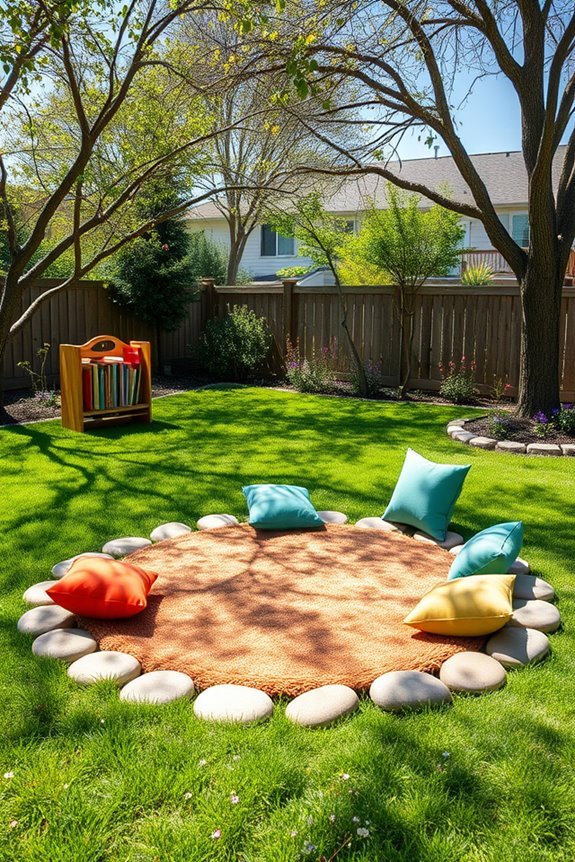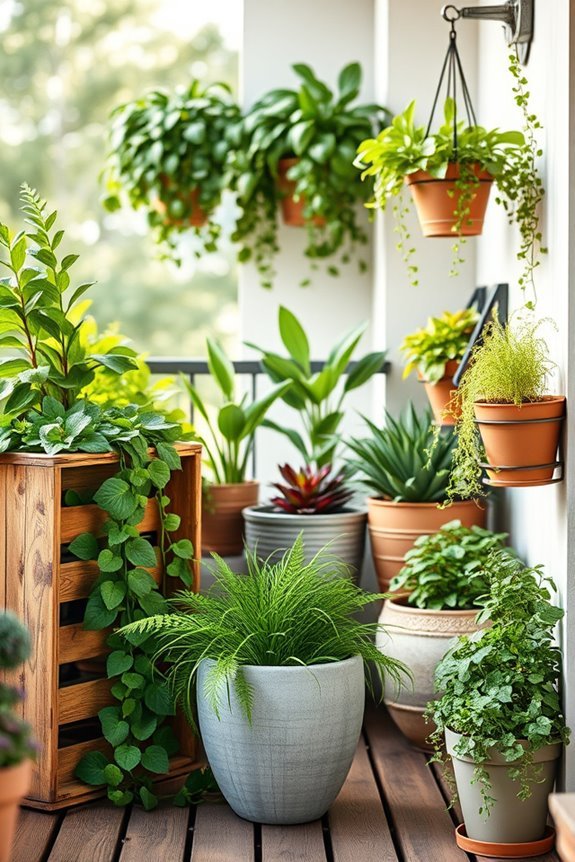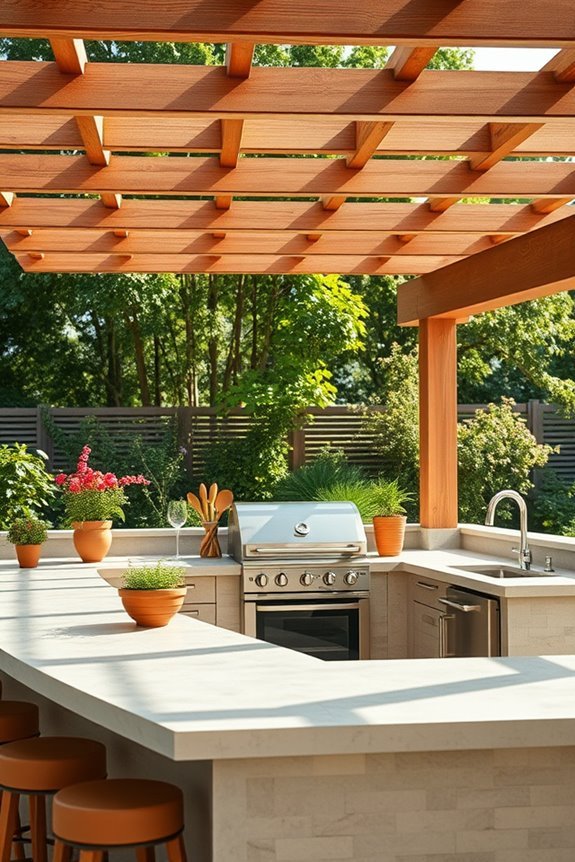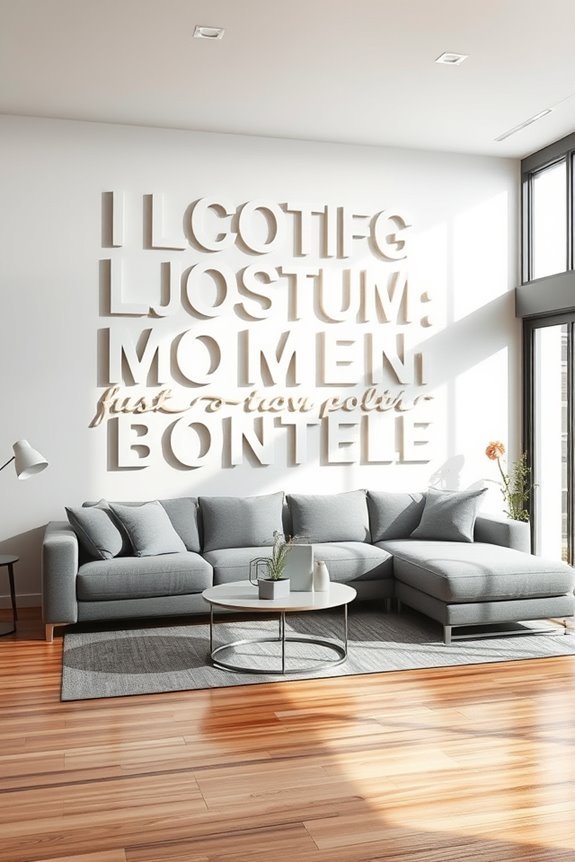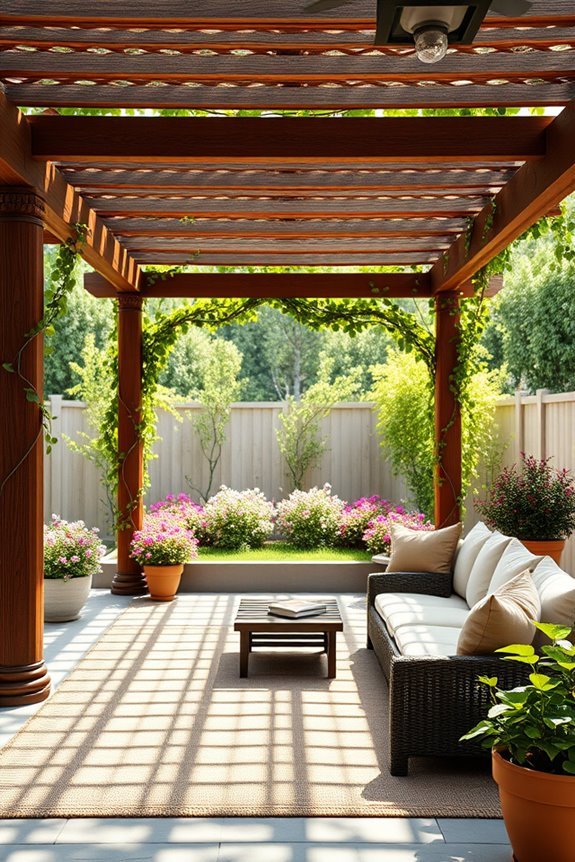What Does PVC Stand For in PVC Pipe? Meaning and Full Form
PVC stands for polyvinyl chloride, a widely used synthetic plastic polymer known for its durability and versatility. It is primarily utilized in plumbing and construction applications. PVC’s composition includes polymer chains from vinyl chloride monomers, making it resistant to corrosion and environmental degradation. There are various types of PVC, including rigid and flexible options, catering to different needs. If you’re looking for more information on its uses or environmental impact, feel free to ask!
Definition of PVC

Polyvinyl chloride, or PVC, is a widely used synthetic plastic polymer known for its durability and versatility. It is resistant to environmental degradation, chemical corrosion, and moisture, making it ideal for construction and plumbing applications.
PVC can be found in both rigid and flexible forms, suitable for pipes, fittings, and electrical cable insulation. Its lightweight nature and easy installation make it appealing across various industries.
Additionally, PVC is recyclable, enhancing its sustainability. As a fundamental material, PVC plays a crucial role in modern infrastructure and product development.
History of PVC
PVC, or polyvinyl chloride, was first discovered in 1835 by Henri Victor Regnault, but it wasn’t until the mid-20th century that it became commercially viable.
Initially, it remained unused until German chemist Fritz Klatte developed a method for producing it in a usable form in the early 1900s.
The material gained prominence during World War II for its durability and chemical resistance in military applications.
Chemical Composition of PVC
The chemical composition of PVC (polyvinyl chloride) primarily consists of polymer chains made from vinyl chloride monomers.
To improve its properties, various additives are used, which enhance flexibility, durability, and other characteristics.
Understanding the chemical makeup of PVC is crucial for assessing its environmental impact and suitability for different applications.
If you’re looking to learn more about PVC’s properties and uses, this information is essential for making informed decisions.
Basic Structure of PVC
PVC, or polyvinyl chloride, is a widely used synthetic polymer made from repeating units of vinyl chloride monomers.
Its basic structure includes:
- Vinyl Chloride Monomers: These are the core building blocks of the polymer chain.
- Covalent Bonds: Strong connections between carbon and chlorine atoms that ensure stability.
- Linear Configuration: This allows for efficient processing and shaping of the material.
- Crystalline and Amorphous Regions: These areas enhance the mechanical strength and thermal properties of PVC.
This unique molecular arrangement makes PVC ideal for various applications, particularly in pipes and construction materials.
Additives in PVC Composition
Additives in PVC are crucial for enhancing its properties and performance, tailoring it for specific applications.
Here are key additives and their benefits:
- Plasticizers: Increase flexibility and workability.
- Stabilizers: Protect against heat and UV degradation.
- Fillers (e.g., calcium carbonate): Improve mechanical strength and lower production costs.
- Colorants: Achieve desired aesthetic qualities.
- Flame retardants: Reduce flammability for improved safety.
- Impact modifiers: Enhance toughness for outdoor and high-stress environments.
These additives ensure PVC remains versatile in construction, plumbing, and other industries.
Environmental Impact of PVC
Sustainability concerns about PVC (polyvinyl chloride) stem from its environmental impacts. Here are the main issues to consider:
- Toxic Emissions: The manufacturing process can release harmful chemicals like dioxins, affecting air quality.
- Waste Management: PVC is non-biodegradable, leading to significant landfill waste and long-term pollution.
- Resource Depletion: Its production relies heavily on non-renewable fossil fuels, contributing to greenhouse gas emissions.
- Water Pollution: Improper disposal can cause leachate that contaminates water sources.
To address these challenges, it’s crucial to adopt sustainable practices in PVC production and usage.
Types of PVC
When selecting PVC for construction, plumbing, or electrical applications, it’s important to understand the different types available:
- PVC-U (Unplasticized PVC): This rigid type is commonly used for pipes and fittings due to its strength and durability.
- PVC-P (Plasticized PVC): Flexible and bendable, this type is ideal for applications requiring movement and flexibility.
- CPVC (Chlorinated PVC): Suitable for hot water systems, CPVC can withstand higher temperatures than standard PVC.
- PVC-O (Oriented PVC): Known for its lightweight and durable properties, PVC-O features increased strength with reduced wall thickness.
- Specialized Formulations: Options like fire-resistant and impact-resistant PVC are available for specific needs.
Understanding these types will help you choose the right PVC for your particular application.
Uses of PVC Pipe
PVC pipes are a popular choice for plumbing due to their durability and affordability.
They are also used as electrical conduits, protecting wiring from damage.
Additionally, PVC pipes play a crucial role in drainage and waste management systems, ensuring efficient water flow and disposal.
Whether you’re looking to install new plumbing, set up electrical wiring, or manage drainage, PVC pipes offer reliable solutions.
Plumbing Applications and Benefits
When it comes to plumbing, PVC pipe is a top choice for its versatility and benefits.
Here are the key advantages of using PVC pipe:
- Corrosion Resistance: PVC won’t rust or corrode, ensuring a long lifespan.
- Affordability: It is typically cheaper than other materials, making it a cost-effective option for large projects.
- Easy Installation: Its lightweight nature makes handling and installation straightforward, which can lower labor costs.
- Efficient Fluid Flow: The smooth interior promotes better fluid flow and reduces pressure loss.
These characteristics make PVC pipe a favored option for both residential and commercial plumbing systems.
Electrical Conduit Solutions
When looking for an effective electrical conduit solution, PVC pipe is an excellent choice.
Its lightweight and durable properties, along with resistance to corrosion and moisture, make it suitable for a variety of electrical installations in residential, commercial, and industrial settings.
PVC conduit protects electrical wiring and enhances safety with its non-conductive nature, minimizing electrical hazards.
Additionally, its ease of installation and flexibility allow for creative routing in complex building layouts.
With affordability as an added benefit, PVC pipe is a reliable and long-lasting option for electrical contractors.
Choose PVC conduit for your electrical projects to ensure safety and efficiency.
Drainage and Waste Systems
When considering drainage and waste systems, PVC pipe stands out for several key reasons:
- Corrosion Resistance: PVC pipe will not rust or corrode, ensuring a long-lasting solution for your plumbing needs.
- Lightweight: Its lightweight nature makes handling and installation simpler and quicker.
- Cost-Effective: PVC is generally more affordable than other piping materials, helping you stay within budget.
- Smooth Interior: The non-porous surface of PVC reduces friction, facilitating better wastewater flow.
These advantages make PVC pipe a top choice for both residential and commercial drainage systems, offering reliable performance and lower maintenance costs.
Advantages of PVC Pipe
PVC pipe is a highly sought-after material due to its numerous benefits. Its lightweight design makes handling and installation straightforward, which can help lower labor costs.
PVC pipes are resistant to corrosion and chemicals, ensuring they last longer and perform reliably in plumbing and drainage systems. Their smooth interior surfaces promote efficient water flow and reduce blockages.
Additionally, PVC requires minimal maintenance, making it a cost-effective choice for both residential and commercial projects. Its versatility allows for use in various environments, both underground and above ground, enhancing its appeal in the construction and plumbing sectors.
Disadvantages of PVC Pipe
While PVC pipes are popular for their advantages, they do have some significant drawbacks.
Firstly, environmental concerns are paramount, as PVC is not biodegradable and can release harmful chemicals during production and disposal.
Secondly, PVC is sensitive to temperature fluctuations, which can compromise its structural integrity in extreme conditions.
If you’re considering PVC pipes for your project, it’s essential to weigh these disadvantages against their benefits.
Environmental Concerns
PVC pipes, commonly used in plumbing and construction, pose serious environmental issues that are important to consider if you’re evaluating materials for your projects.
Here are the key concerns:
- Toxic Emissions: The production of PVC releases harmful substances, including dioxins and phthalates, which can contaminate air and water.
- Non-Biodegradable Waste: PVC pipes can take hundreds of years to break down, leading to long-lasting landfill waste.
- Chemical Leaching: Over time, harmful chemicals from PVC can leach into surrounding soil and groundwater, posing health risks.
- Energy Intensive Production: The manufacturing process for PVC requires a significant amount of fossil fuels, contributing to greenhouse gas emissions.
For environmentally conscious projects, consider sustainable alternatives to PVC that minimize these impacts.
Temperature Sensitivity
Understanding Temperature Sensitivity in PVC Pipes
PVC pipes have a notable temperature sensitivity that can impact their performance in varying climates. Here’s a quick overview of how temperature affects PVC pipes:
| Temperature Range | Effect on PVC Pipes |
|---|---|
| Below 32°F (0°C) | Becomes brittle and may crack |
| 32°F to 140°F (0°C to 60°C) | Generally stable |
| Above 140°F (60°C) | Softens and can deform |
In extreme weather conditions, PVC pipes may fail, leading to plumbing issues. If your project involves significant temperature fluctuations, consider alternative materials. Understanding these limitations is crucial for making informed decisions in piping solutions.
PVC Pipe vs. Other Materials
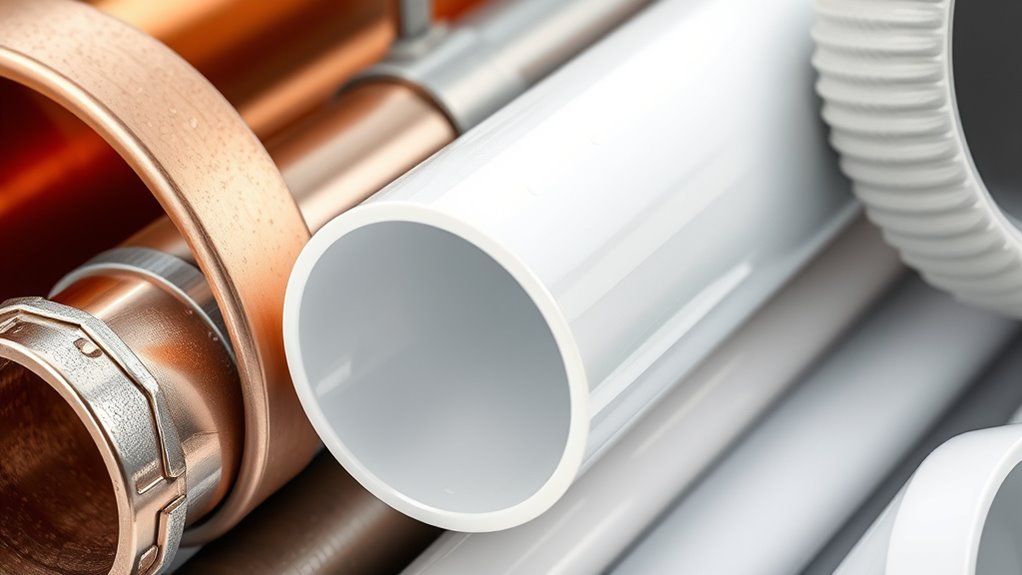
When choosing between PVC pipe and other materials, consider these key benefits of PVC:
- Cost-Effectiveness: PVC is typically cheaper than metal options like copper and steel, making it ideal for budget-friendly projects.
- Corrosion Resistance: PVC does not corrode, ensuring a longer lifespan and lower maintenance costs compared to metal pipes.
- Lightweight: PVC pipes are easier to handle and install due to their lightweight nature, unlike heavier materials such as concrete and metal.
- Versatility: PVC can be easily shaped and fitted, making it suitable for a wide range of plumbing and construction applications.
These advantages make PVC a strong contender for various projects.
Manufacturing Process of PVC Pipe
The manufacturing process of PVC pipe consists of several key steps that convert raw materials into strong, versatile pipes.
First, polyvinyl chloride resin is mixed with additives and stabilizers. This mixture is then heated and pressurized in an extruder, melting it into a continuous pipe shape.
After extrusion, the pipe is cooled with water to solidify. The final product is cut into specified lengths, and rigorous quality control ensures it meets industry standards for strength and durability.
The pipes are then packaged for distribution, ready for plumbing and construction use.
Environmental Impact of PVC
The environmental impact of PVC (polyvinyl chloride) is significant due to its production process, which generates considerable emissions.
Recycling PVC presents challenges, as not all facilities can manage the material effectively, complicating its sustainability.
Furthermore, PVC’s long-term effects on ecosystems are concerning, with its persistence posing risks to the environment.
If you’re looking for more information on the sustainability of PVC or alternatives, feel free to ask!
Production Process Emissions
The production of PVC raises important environmental concerns due to significant emissions.
Here are the key pollutants released during the manufacturing process:
- Volatile Organic Compounds (VOCs): Contributing to smog and respiratory issues.
- Dioxins: Toxic byproducts that can accumulate in the food chain, posing health risks.
- Hydrochloric Acid: Released during combustion, leading to acid rain and harming aquatic ecosystems.
- Greenhouse Gases: Including CO2, which contribute to climate change.
Minimizing these emissions is crucial for reducing the environmental impact of PVC production.
Recycling Challenges
Recycling PVC presents several challenges that can hinder effective processes.
Key issues include:
- Lack of Infrastructure: There is insufficient recycling infrastructure specifically designed for PVC, resulting in limited options for collection and processing.
- Additive Complications: PVC often contains additives that may not be compatible with standard recycling methods, complicating the recycling process.
- Contamination: Mixing PVC with other materials can degrade the quality of recycled PVC, making it less valuable.
- Economic Factors: The cost of recycling PVC can sometimes exceed the value of the recycled material, making it economically unfeasible.
Addressing these challenges requires improved recycling technologies and policies to foster more sustainable practices.
Long-term Environmental Effects
Recycling challenges significantly affect the long-term environmental impact of PVC.
Here are key issues related to its disposal:
- Soil Contamination: PVC can leach toxic additives into the soil, harming plant growth and soil health.
- Water Pollution: Improper disposal can lead to PVC entering water bodies, which poses threats to aquatic life due to toxic exposure.
- Wildlife Threats: Animals may ingest PVC debris, causing injury or death and disrupting food chains.
- Greenhouse Gas Emissions: The production and incineration of PVC contribute to climate change by releasing harmful gases.
To reduce PVC’s environmental footprint, it’s essential to improve recycling methods and adopt responsible disposal practices.
Safety Considerations for PVC Pipe
When using PVC pipe, it’s crucial to prioritize safety to ensure proper handling and installation. Here are key safety considerations:
1. Chemical Exposure: Be aware that harmful chemicals can be released during manufacturing and when PVC is exposed to high temperatures.
Ensure adequate ventilation when cutting or welding PVC to avoid inhaling hazardous fumes.
2. Protective Gear: Always wear protective gear, such as gloves and masks, to minimize exposure to dust and particles during handling.
3. Storage Conditions: Store PVC pipes away from direct sunlight to prevent degradation and ensure longevity.
4. Regulatory Compliance: Familiarize yourself with local regulations regarding PVC usage to guarantee adherence to safety standards.
Installation of PVC Pipe
To ensure a reliable and leak-free plumbing system, proper installation of PVC pipe is crucial. Follow these essential steps for optimal results:
- Cutting: Use a fine-toothed saw for clean edges on pipe sections.
- Deburring: Remove rough edges or burrs to protect fittings and ensure a proper seal.
- Dry Fitting: Assemble pipe sections without adhesive to confirm alignment and fit.
- Adhesive Application: Apply PVC cement evenly on both the pipe and fitting for a secure bond.
Adhering to these steps will enhance the longevity and efficiency of your plumbing system, reducing the risk of future leaks and complications.
Maintenance of PVC Pipe
Regular maintenance of PVC pipes is crucial to ensure longevity and optimal performance. Here’s how to maintain your PVC pipes effectively:
- Conduct Periodic Inspections: Regularly check for wear, leaks, or clogs. Look for visible damage like cracks or warping and address these issues promptly.
- Clean the Pipes: Schedule routine cleaning to remove debris or sediment buildup that can hinder water flow.
- Avoid Harsh Chemicals: Steer clear of strong chemicals that can damage the pipe material.
- Insulate Properly: Protect your pipes from temperature fluctuations by using appropriate insulation.
PVC Pipe Standards and Regulations
When it comes to PVC pipes, several key standards and regulations ensure their safety and performance. Here’s what you need to know:
- Material Specifications: Regulations specify the composition and quality of PVC to ensure durability and safety.
- Testing Methods: Standards dictate testing procedures for pressure ratings, impact resistance, and thermal stability.
- Installation Guidelines: Instructions for proper installation help prevent leaks and maintain system integrity.
- Environmental Impact: Regulations address the environmental effects of PVC production and disposal, encouraging sustainable practices.
Understanding and adhering to these standards is essential for both manufacturers and users to ensure effective and safe usage of PVC pipes.
Future of PVC in Plumbing and Construction
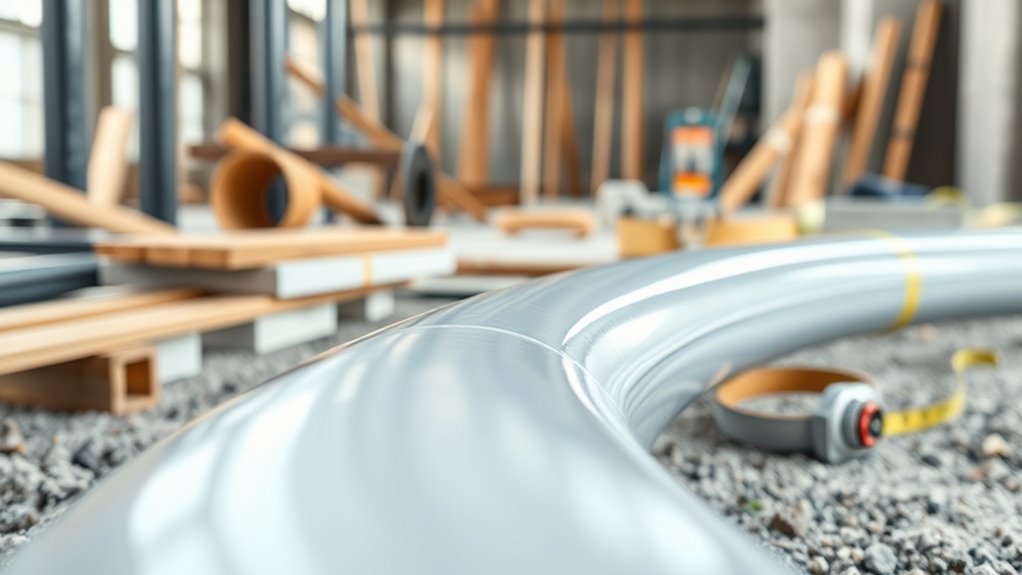
The future of PVC in plumbing and construction is bright, thanks to technological advancements and the growing demand for sustainable materials.
Innovations are making PVC pipes more durable and efficient, expanding their applications. Manufacturers are also focusing on creating recyclable and less harmful PVC options to support environmentally friendly construction practices.
Additionally, the integration of smart technology in plumbing systems is increasing the appeal of PVC due to its lightweight and flexible nature, which simplifies installation and maintenance.
This evolution aligns with industry trends toward sustainability and efficiency, ensuring PVC remains a key player in modern construction and plumbing.
Conclusion
PVC stands for Polyvinyl Chloride, a widely used plastic in various applications, particularly in piping systems. Its durability, resistance to corrosion, and cost-effectiveness make it a popular choice in construction and plumbing. As technology advances, the future of PVC may evolve, but its significance in various industries remains strong. For those seeking reliable piping solutions, understanding PVC’s attributes and applications is essential.

